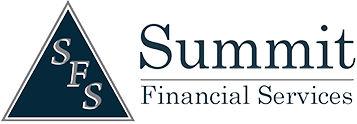Making the Most of Your Credit Card
Airline miles, hotel points and credit card points can save frequent travelers a significant amount of money. I’ve played the miles and points game for over a decade and would like to share with you some basics.
Allow me to preface this piece with the following foundation: most people who don’t travel often, or who don’t want to put a lot of time into this hobby are better off with a 2% cash back credit card as opposed to all the fancy premium travel cards that are available. A 2% return on money spent is fantastic and should be the bar that most people aim for. But if you’re like me (you travel a lot and love detailed research, to squeak more benefits out of your spending) you might be tempted to start collecting airline miles or other points offered by hotels and credit cards. There are travel blogs that discuss all of the following in great detail. However, this particular blog is meant to serve as a basic primer.
The first piece of advice I will offer is to stick to generic transferable bank points- ones like Chase Ultimate Reward Points, or Amex Membership Rewards Points. These companies (and others) have transfer partners with major airlines and hotels. This helps you find the best deal and allows you to transfer your points to whatever partner has the flight or room that you’re looking for. The banks also have systems that allow you to book through their own travel agencies using points to do so at fixed rates. Ideally you should be getting at least 1.5 cents per point, but by doing the right amount of research, people often get much better results. But wait…isn’t that less than the 2% cash back card? Yes. But you also should not be earning only one point per dollar spent! If you are, you haven’t done your homework and are better with that 2% cash back card after all. Most cards have bonus categories that give you 2x, 3x, even 5x points for purchases in particular categories such as restaurants or travel. If you’re savvy enough to use the right card for the right purchases and get 1.5 cents or more per point when you use them, you outpace the 2% cash back card. This obviously requires a good bit of work to find out what will be best given your personal spending and travel habits. A simpler method is to use a card like Chase Freedom Unlimited which offers a straight 1.5 points per dollar spent. (1.5 points x 1.5 cents per point = 2.25% return on your spending at a minimum.)
Another reason I like generic bank points instead of earning straight airline miles is that miles are locked into that specific airline. Not only are they subject to devaluation at the airline’s discretion, but other things may happen that cause you to fly less on that particular airline. For instance, I had 180,000 points in my Southwest Airlines account for several years. At one time they were a great option when flying out of Islip MacArthur Airport. A few years ago that all changed. Southwest butchered their Islip schedule and now forces you to change in Baltimore for most flights to Florida. (Thanks Southwest….do you realize that NO ONE going to Florida wants to add 2 hours to their normal 2.5 hour trip and risk being stuck in Baltimore in the middle of winter?) This rendered my 180,000 points almost useless. Had they been at Chase I could use them for JetBlue or a number of other airlines. But when they’re at an airline, you’re stuck. (There IS a service that allows some limited transfer between airlines, but you lose so much value it’s not worth it.) Eventually we got lucky and were able to use most of them, but it took three years for that to happen. Moral of the story- don’t hoard huge amounts of points at airline and hotel programs.
The one big exception to this is when you live in a hub city for a major airline and end up flying them all the time. Then it can make sense to use the dedicated airline credit card. Additionally, these cards can earn other perks like free checked bags, lounge access, accelerated elite flyer status, etc. Personally, I do this with JetBlue’s premium card since I fly them more often than not.
Lastly, before you sign up for that “premium” travel card which carries a $99 annual fee (or $600 annual fee like Chase Sapphire Reserve and Amex Platinum), make sure you’re going to get a solid return on your investment. Here are some things to ask yourself:
- Is the signup bonus close to an all-time high?
- Will you be able to meet the required spending threshold to get that signup bonus? What are the perks of the card and will you use them?
- How much are they worth?
- Do the bonus categories match your spending habits?
- What built in travel insurance is offered on the card?
In my heyday of this hobby, I had three premium credit cards that cost roughly $500 each annually. And I made money on ALL of them. In fact, on one card (no longer available) I used to typically make $2,000 annually just from the basic benefits! That’s because I did the research knew what was available.




